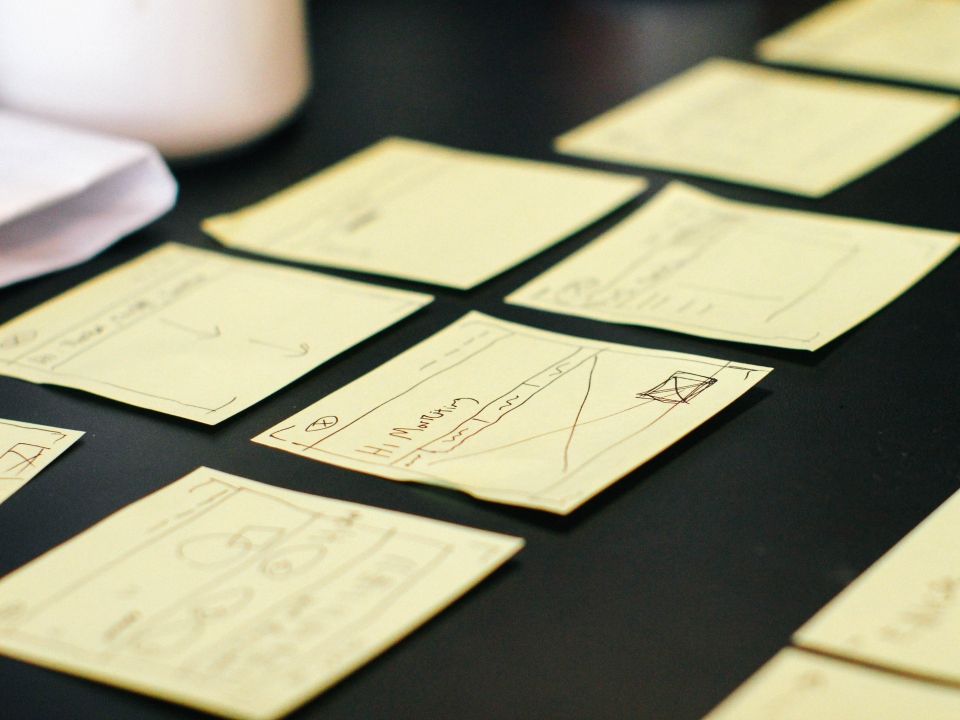Enrolling in graduate school is a big investment and we think you should learn as much as you can about the
IPD Programs before applying.
Admissions
Q. What qualities does the Graduate Admissions Committee look for in an applicant?
A: The Graduate Admissions Committee looks for well-rounded students who show their potential to excel in the three disciplines of Engineering, Design, and Business. We look for strong competency in one of the disciplines and aptitude for the other two. A strong, visual portfolio that demonstrates both conceptual and analytical thinking is essential.Q: What are the backgrounds of students in the program?
A: Students have a variety of backgrounds, though most come from design or engineering disciplines. A few students hold degrees in business or the liberal arts. All students will be challenged to develop their creative muscle and iterative skills.Q: Can I apply for the M:IPD if I have an engineering background?
A: Yes, many students with an engineering background apply to the M:IPD program. These applicants will join students with non-engineering backgrounds in the program.Q: Can I apply for the MSE:IPD if I do not have an engineering background?
A: Due to the rigorous course of study, applicants to the MSE:IPD program must possess an engineering background. Students without an engineering background may apply to the program, but they must express a willingness to take up to 8 CUs of additional background courses.Q: Is financial aid available?
A: Unfortunately, there is no financial aid available for our master’s degree programs. There are part time jobs available on campus each semester and typically they are 10-20 hours per week and pay ~$12-20 USD, depending on the position. Current IPD students fund their studies through a variety of sources such as student loans, personal funds and private grants (government, employer, private organizations …).Student Employment Office: http://www.sfs.upenn.edu/seo/
Paying for a Penn Education: http://www.sfs.upenn.edu/paying/index.htm
Q: How can I learn more?
A: Each fall we host a series of open houses and live web-chats where you can learn more about the program and ask questions.Q: Are the M:IPD and MSE:IPD considered STEM programs?
A: Yes. Both the M:IPD and MSE:IPD are classified as STEM programs.
About IPD
Q. How long does the program take to complete?
Q: Is IPD a STEM program?
Q: Can I complete the program on a part-time basis?
A: Students must enroll in the program full-time. Many of our students do have time for part-time jobs while pursuing the degree.Q: I want to be a design entrepreneur. Is IPD right for me?
A: Yes. Students develop their ability to apply the iterative design process to both products and business models. If a student is specifically interested in becoming an entrepreneur, their advisor will work with them to create a schedule that reflects this interest. There are many resources at Penn, including student groups, business plan competitions, and campus incubators that also support design entrepreneurs.Q: I don't have skills in Rhino, Solidworks, or Adobe. Should I learn these prior to enrolling in the program?
A: Students will have the opportunity to learn Solidworks through the engineering and business foundation courses. Students without working knowledge of Adobe can learn it on their own or choose courses that will help them learn it. Starting to work with software the summer before you start school will help you get up to speed more quickly.Q: How much of the coursework is collaborative and how much is independent?
A: Creating an entirely new, innovative product takes a combination of skills, talents and hard work, and often requires the work of a team. IPD emphasizes collaboration and team projects, especially during the Final Project. While students can work independently in some courses, the program strongly encourages a collaborative design process.


After IPD
Q. What can I expect to have in my portfolio upon graduation?
A: M:IPD and MSE:IPD students will work on a variety of projects during their four semesters. Based on the student’s interest, his or her portfolio will showcase design research techniques, user experience design, concept generation, concept refinement, prototyping ability, strategic and analytic thinking. Based on their interests, students can choose courses that focus on digital or physical products and can prioritize whether they want to work on smart products, products for health and wellness, sustainable products, or pursue other interests.Q: What do students do after they graduate?
A: Graduates are employed in a variety of design related fields, from established design strategy consulting firms to architecture and engineering firms, to tech startups and entrepreneurial ventures. They are consultants, designers, entrepreneurs, researchers, builders, and engineers. For more information about recent graduates, please visit the alumni page.
If you have questions that we still haven’t answered, please feel free to contact someone from the program’s leadership team.
If you are a corporate or non-profit entity who is interested in partnering with the Integrated Product Design program for a project, please email Sarah Rottenberg.
